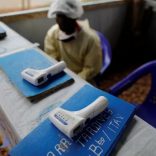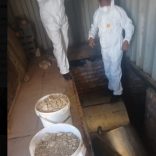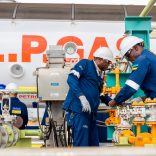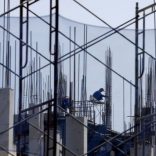Mozambique: Petromoc's profits tank 90% in 2024
Mozambique: Doctors protest at shortage of protective equipment – AIM report

Image: Lusa
The two organisations representing Mozambican doctors, the Order of Doctors (OrMM) and the Mozambican Medical Association (AMM), have protested at the shortage of the individual protective equipment that health professionals need when treating patients suffering from the Covid-19 respiratory disease.
In a joint statement, dated 23 October, the two organisations said that, in a recent survey undertaken by the AMM, of the 139 doctors surveyed “more than half had not received complete and adequate individual protection equipment for their job in the previous days”.
The situation, the doctors warned, “is putting at risk doctors, their families and the users of the health units. The health system is less able to provide the best response possible when health professionals are not duly protected”.
They believed that one consequence of the lack of adequate protection had been the death of one of the country’s senior surgeons, Antono Mujovo, in Maputo on 20 October. The signatories believed that much more could have been done “to save such a precious cadre”.
The problem extended beyond the lack of Covid-19 protective equipment. The statement pointed to shortages of essential drugs, including antibiotics, shortages of laboratory reagents, and breakdowns of vital equipment such as X-ray machines.
Reacting to these protests at a Maputo press conference on Monday, the National Director of Medical Care in the Health Ministry, Ussene Isse, said the shortages were a global problem, affecting many countries and not just Mozambique.
Covid-19 related demand had put enormous pressure on the usual suppliers of protective equipment, reagents and drugs. In addition, frontiers had been closed all over the world causing further logistical problems.
Isse said the Health Ministry is doing all in its power to ensure that the National Health System continues to function in acceptable conditions. “The system has not stopped. It’s working”, he declared.
“We are receiving individual protective equipment”, he said. “The medicines are arriving and the reagents are also arriving, but not in the way we would like them to arrive. It’s slow because globally it’s still a huge challenge.”
But over the coming week, the Ministry hoped to receive more than 1.5 million N95 masks, over 550,000 disposable medical aprons and more than 660,000 overalls to improve safety conditions for health professionals.
At the same press conference, the Deputy Director of the National Health Institute (INS), Eduardo Samo Gudo, rejected calls for imposing a lockdown or a sanitary cordon on all or part of Maputo.
That call is based on the claim that most of the cases of Covid-19 are concentrated in just one Maputo municipal district, KaMpfumo, in the centre of the city. Samo Gudo pointed out that the high Covid-19 rate in KaMpfumo is partly based on the high concentration of health units in this urban district, and particularly the presence of Maputo Central Hospital, the largest health unit in the country.
Epidemiological surveillance figures from the hospitals, he added, are not a good way to estimate the true extent of the disease in the city. For that the results of the surveys testing people for the presence of coronavirus antibodies in their bloodstream should be used.
For Maputo, that survey showed that the municipal district with the greatest coronavirus transmission was not KaMpfumo at all, bur KaLhamankulo followed by KaMabukwana.
Samo Gudo believed there are now signs of a certain stabilisation of the Mozambican Covid-19 epidemic. “When we compare the first three weeks of October with the month of September, what we note is that there is no increase or acceleration”, he said.
This conclusion could be drawn from the various indicators used to measure the level of transmission, including the number of new cases, the positivity rate (the number of new cases expressed as a percentage of those tested), the number of Covid-19 patients hospitalised and the number of deaths.
Samo Gudo warned against treating this as good news. “The really good news would be a reduction in the epidemic”, he said. “The effort we are making is not to stabilise, but to reduce. Stabilisation is a first step, but the efforts we are making are for reduction”.












Leave a Reply
Be the First to Comment!
You must be logged in to post a comment.
You must be logged in to post a comment.